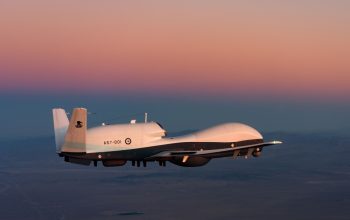The Royal Australian Navy’s three Hobart Class Destroyers have exercised together for the first time, demonstrating their cooperative capabilities to increase maritime security and stability in region. HMA Ships Hobart (DDG 39), Brisbane DDG 41 and Sydney (DDG 42) conducted joint tests, trials and exercises off the east coast of Australia, further developing their air and surface warfare capabilities. During the exercise, Hobart and Brisbane each fired a Standard Missile 2.Australian Minister for Defence, Senator the Hon Linda Reynolds CSC said the exercise demonstrates Royal Australian Navy’s preparedness to respond to a more complex and contested maritime domain.

“The Hobart Class are the most capable and lethal warships Australia has ever built, increasing our interoperability with the United States and allowing us to work even closer with our allies and partners. Through this Government’s record up to $183 billion Naval Shipbuilding Program we are growing our Navy to support the need for increased maritime security and stability in our region. The Hobart Class Destroyers have demonstrated that they can be integrated effectively to support the mutual endeavours and commitments of the ADF and our partner nations. Today’s exercise showcases the capabilities these warships have when using the Cooperative Engagement Capability.” Minister Reynolds said.

Minister for Defence Industry Melissa Price witnessed the joint exercise from on board HMAS Hobart. Minister Price said the cooperative engagement capability allowed shared information and data to be integrated into the ship’s Aegis combat management system. Australian workers from both Raytheon Australia and Lockheed Martin Australia should be proud of their significant contribution to this remarkable capability. The trails included Royal Australian Air Force participation, further enhancing the Destroyers combat reach and effectiveness and opening new opportunities for the joint integrated air missile defence program.

The Hobart class is a ship class of three air warfare destroyers (AWDs) built for the Royal Australian Navy (RAN). Planning for ships to replace the Adelaide-class frigates and restore the capability last exhibited by the Perth-class destroyers began by 2000, initially under acquisition project SEA 1400, which was re-designated SEA 4000. Although the designation “Air Warfare Destroyer” is used to describe ships dedicated to the defence of a naval force (plus assets ashore) from aircraft and missile attack, the planned Australian destroyers are expected to also operate in anti-surface, anti-submarine, and naval gunfire support roles.


























